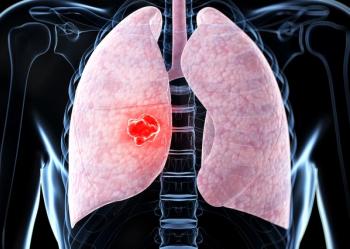
FDA Approves Omidubicel-onlv for Hematologic Malignancies
Patients with hematologic malignancies who require allogenic hematopoietic stem cell transplant can now receive omidubicel following the FDA’s approval of the agent.
The FDA has granted approval to omidubicel-onlv (Omisirge) as the first substantially modified allogeneic cord blood–based cell therapy for the treatment of patients 12 years and older with hematologic malignancies who require an allogenic hematopoietic stem cell transplant following a myeloablative conditioning regimen, according to a press release from the FDA.1
The approval was supported by data from a phase 3 trial (NCT02730299) that evaluated the efficacy and safety of omidubicel—a first-in-class, advanced NAM-enabled stem cell therapy—compared with standard umbilical cord blood transplantation in the management of hematologic malignancies including lymphoma, leukemia, and myelodysplastic syndromes.
Topline data indicated that 87% of patients receiving omidubicel achieved neutrophil recovery with a median of 12 days (95% CI, 10-14) compared with 83% of those who received umbilical cord blood transplantation and achieved neutrophil recovery with a median of 22 days (95% CI, 19-25).
Investigators reported bacterial or fungal infections at 100 days following treatment in 39% of those receiving omidubicel vs 60% of those in the control group. The most common adverse effects associated with omidubicel included infections, graft-versus-host disease, and infusion reactions.
“Umbilical cord blood transplant in recent years has largely fallen out of favor with the advent and broad applicability of haploidentical transplantation,” Corey S. Cutler, MD, MPH, FRCPC, director of Clinical Research, Stem Cell Transplantation; director, Stem Cell Transplantation Survivorship Program; and an institute physician at Dana-Farber Cancer Institute, as well as an associate professor of Medicine at Harvard Medical School, said in an interview with CancerNetwork® ahead of the approval.
“[However], there is still a subset of patients who require umbilical cord blood as their only source of donor stem cells. For these [patients], omidubicel will certainly improve their outcomes.
According to findings published in Blood,on day 42 after receiving transplantation, the cumulative incidence of neutrophil engraftment 96% at a median of 10 days (95% CI, 8-13) vs 89% with a median of 20 days (95% CI, 18-24) in each respective cohort.2
The cumulative incidence of platelet engraftment on day 42 following transplantation was 55% vs 35% in the omidubicel and cord blood arms, respectively (P = .028). At day 100, the cumulative incidence of platelet engraftment in the experimental arm was 83% at a median of 37 days (95% CI, 33-42) vs 73% and a median of 50 days (95% CI, 42-58; P = .023) in the control arm.
Full donor chimerism occurred in all but 2 patients receiving omidubicel on days 30 and 100 and beyond following transplantation; 1 patient had an early relapse, and the other had primary graft failure. On day 42 and onward, 6 patients had graft failure after receiving an umbilical cord transplant.
The median follow-up was 10 months after transplantation. The non-relapse mortality rate at 210 days was 11% in the omidubicel cohort and 24% in the control arm (P = .09). After 15 months, the disease relapse rate for the omidubicel and control arms, respectively, was 25% vs 17% (P = .32), with relapse occurring among 4 patients in each arm.
The hazard ratio [HR] for treatment failure was 0.79 (95% CI, 0.45-1.38; P = .4), with an adjusted HR of 0.57 (95% CI, 0.31-1.1; P = .09) for mortality between both cohorts. The 1-year graft-versus-host-disease (GVHD)-free relapse-free survival was 36% in the omidubicel arm vs 45% in the control cohort (P = .56). There were 11 patient deaths in the omidubicel arm and 18 deaths in the control arm. Two patients receiving omidubicel died from relapsed disease vs 4 in the control arm.
The
References
- FDA approves cell therapy for patients with blood cancers to reduce risk of infection following stem cell transplantation. News release. FDA. April 17, 2023. Accessed April 17, 2023. bit.ly/3UEO3kp
- Horwitz ME, Stiff PJ, Cutler C, et al. Omidubicel vs standard myeloablative umbilical cord blood transplantation: results of a phase 3 randomized study. Blood. 2021;138(16):1429-1440. doi:10.1182/blood.2021011719
- Gamida Cell announces FDA acceptance of biologics license application for omidubicel with priority review. News release. August 1, 2022. Accessed August 2, 2022. https://bit.ly/3BIQj2i
Newsletter
Stay up to date on recent advances in the multidisciplinary approach to cancer.

















































































